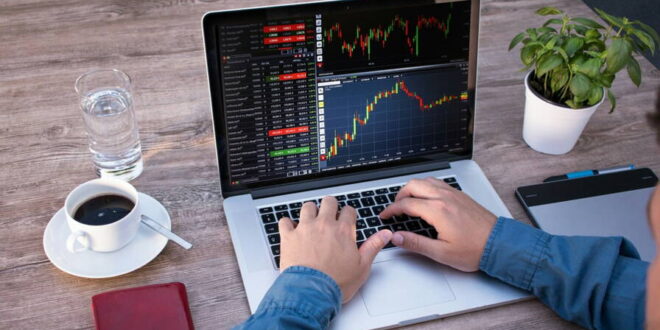In the fast-paced world of trading, where milliseconds can mean the difference between profit and loss, automated trading systems have emerged as powerful allies for investors seeking to navigate the complexities of the market. These systems promise efficiency, speed, and the ability to remove emotional biases from trading decisions.
Automated trading software has become essential for traders looking to optimize their performance. However, as the number of options on the market expands, choosing the right automated trading system tailored to your specific investment goals becomes a daunting task.
From sophisticated algorithms that analyze vast amounts of data to user-friendly platforms that cater to novices, the landscape is rich with opportunities and pitfalls. In this article, we’ll delve into the essential factors you need to consider when selecting an automated trading system, ensuring you make an informed choice that aligns perfectly with your risk appetite and financial aspirations.
Whether you’re a seasoned trader looking to enhance your strategies or a newcomer eager to dip your toes into the waters of automated trading, understanding the nuances of various systems is crucial to achieving success.
Define Your Investment Goals

Defining your investment goals is the critical first step in choosing the right automated trading system. Are you aiming to build long-term wealth, or do you seek quick gains through active trading? Perhaps youre driven by the desire to achieve financial independence or save for a major life event.
With clarity on your objectives, you can align your trading strategy accordingly. Think about your risk tolerance, time horizon, and overall financial situation; these factors will influence whether you opt for a conservative approach or a more aggressive one.
Additionally, consider the level of engagement you want in managing your investments. By painting a vivid picture of your aspirations and constraints, you can establish a clear roadmap that guides your selection process, ensuring the system you choose complements your strategic vision rather than complicates it.
Key Features of Automated Trading Systems
Automated trading systems boast a myriad of key features that cater to both novice and experienced traders alike. Foremost among these is the ability to execute trades with remarkable speed, seizing opportunities in the market that a human trader might easily miss.
These systems often incorporate advanced algorithms and artificial intelligence, allowing for intricate analysis of market trends and historical data, which can inform more strategic decision-making. Additionally, many platforms offer customizable parameters, enabling traders to fine-tune their strategies to align with personal risk tolerance and investment goals.
Moreover, real-time data integration ensures that the information driving trades is current and relevant, minimizing the risks associated with outdated analysis. Lastly, the automation aspect significantly reduces the emotional factors that can cloud judgment, empowering traders to adhere to their plans without succumbing to greed or fear.
Each of these features contributes to a more efficient and disciplined trading approach, making it essential to understand their nuances when choosing the right system for your investment journey.
Types of Automated Trading Systems

Automated trading systems come in various types, each tailored to different trading strategies and market conditions. At one end of the spectrum, we find algorithmic trading systems, which leverage complex algorithms to execute trades at lightning speeds, capitalizing on minute price fluctuations.
Then there are trend-following systems, designed to identify and ride market trends, allowing traders to potentially profit over extended periods. On the other side, we encounter mean reversion systems that operate on the principle that prices will eventually return to their average, thus triggering trades when conditions deviate significantly.
Furthermore, high-frequency trading systems execute dozens, if not hundreds, of trades in a single day, often driven by advanced statistical models. Lastly, there are discretionary systems, which blend automation with human judgment, enabling traders to intervene when market conditions warrant a personal touch.
Each of these systems brings its own unique advantages and risks, making it imperative for investors to align their choice with their individual goals and risk tolerance.
Conclusion

In conclusion, selecting the right automated trading system is a crucial step in aligning your investment strategies with your financial goals. By thoroughly assessing your risk tolerance, evaluating the features and functionalities of various automated trading software, and considering factors such as market conditions and trading styles, you can make an informed decision that enhances your trading experience.
Remember to conduct regular performance reviews and remain adaptable to evolving market dynamics to ensure the longevity and effectiveness of your chosen system. With careful consideration and planning, an automated trading system can serve as a powerful tool in achieving your investment aspirations.
 Alternative News
Alternative News




